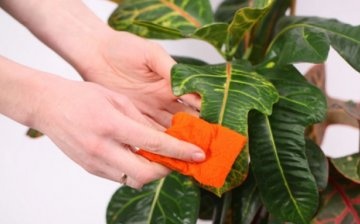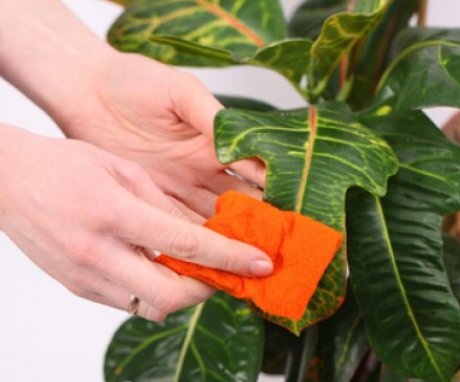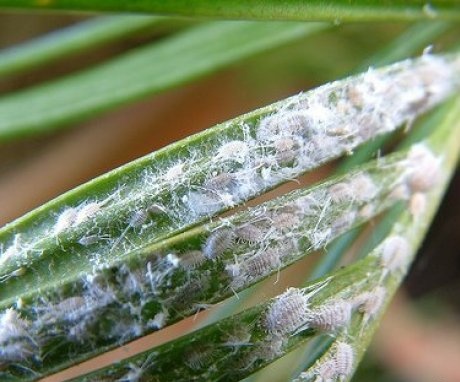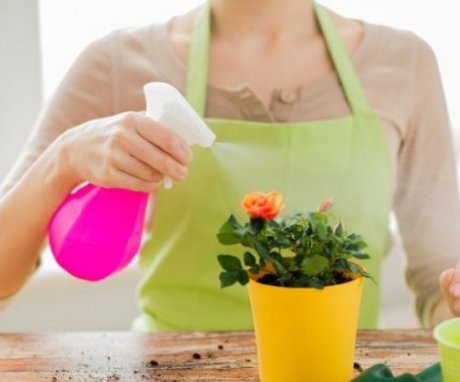Causes of yellowing of leaves in indoor plants and methods of treatment
Why leaves turn yellow houseplants? Every florist has encountered this problem at least once: the pet's leaves suddenly begin to turn yellow, wither, over time they dry up and fall off. In this situation, you need to deal with the causes of the pathology as soon as possible, otherwise the plant may die. Leaves can turn yellow as a result of improper care and due to diseases and pests.
Content:
Improper care
The most common reason for yellowing the leaves of indoor plants is improper care. As soon as the plant is in the wrong conditions, it begins to lose leaves, which over time can lead to its death.
Let's take a closer look at the main reasons why a leaf can turn yellow and lethargic:
- Inadequate watering... If the earthen lump is dry, the leaves first become lethargic and sag due to a decrease in turgor pressure in the plant cells, and then begin to turn yellow and dry out. Some indoor flowers are very sensitive to drought - just skip once watering, and the leaves will already start to turn yellow.
- Excess watering... If the flower is watered too often, a similar effect will be observed, as the roots will begin to rot. The first sign of over-watering in many plants, such as spathiphyllum - dry tips of the leaf: they first turn yellow, and then they can turn black. Excessive watering at low room temperatures is especially dangerous.
- Indoor air is too dry. Many indoor flowers grow wild only in the tropical zone, where it is almost always hot and the air is humid. If you do not provide the plant with proper conditions, it will always feel bad.
- Drafts or cold air flow from an air conditioner. This is another common cause of yellow leaves. Plants should not be left near half-open window sashes, especially when ventilating the room during the cold season.
- Insufficient illumination. In this case, the plant gets rid of leaves that are not exposed to sunlight, especially often this problem occurs in hibiscus... It is advisable for light-loving plants to find a place on the south or east side of the house.
- The problem of yellowing of leaves can also occur due to improperly selected fertilizers... Iron chlorosis often occurs - disease, in which the leaf itself turns yellow, and the veins remain green and become clearly visible. This disease is caused by a lack of iron in the soil, often people suffer from it hydrangea and azalea.
It is for these reasons that the leaves turn yellow most often. To restore a flower, it is necessary to provide it with comfortable conditions and eliminate the influence of all dangerous factors. It should be remembered that sometimes the leaves turn yellow and fall off for natural reasons - over time, the leaf plate grows old, and after falling off it is replaced by a new one.
Diseases and pests
Pests, bacterial and viral diseases can also lead to yellowing of plant leaves.Many parasites feed on cell sap: in this case, they completely affect the entire leaf plate and can spread to the entire plant, which will lead to its rapid death.
In addition, disease or pests can spread to all neighboring plants, so treatment begins with the obligatory isolation of the green "patient".
The most common diseases and pests of indoor plants:
- Spider mites are a common cause of yellow leaves. It is especially dangerous for roses and will be extremely difficult to get rid of. The disease first manifests itself as a whitish bloom on the leaves and the formation of barely noticeable cobwebs, then yellow spots appear on the leaves, and they begin to gradually die off. The tick is able to completely destroy the plant very quickly.
- Aphids and scale insects feed on cell sap: because of them, clearly visible brown plaques appear on the leaf surface. Pests live in large colonies, so it is necessary to carry out a comprehensive processing.
- A common cause of yellowing is fungal infections. They appear as yellowish-brown spots on the leaves, the plates wither, dry and fall off, and the fungus moves higher to the next leaf. Often this disease affects geraniums... The fungus is well preserved in the soil, therefore, not only medical treatment is necessary, but also soil replacement.
Due to these and other diseases, the plant can quickly lose leaves, which poses a serious threat to it. It is necessary to take a measure already upon detection of the first symptoms of the disease.
How to treat a plant
If the reason for the yellowing of the leaves is improper care, then it is necessary to provide him with comfortable conditions in accordance with individual requirements and characteristics. In order to prevent the land from drying out, it is necessary to carry out watering according to the schedule with approximately the same amount of water at room temperature.
In addition, it is necessary to check the dryness of the soil with your finger: if it is still wet, you cannot water the plant again.
If the indoor air is too dry, the plant needs to be regularly spray water - this will protect the leaves from drying out, and they will not turn yellow. With a lack of light, illumination can be enhanced using special fluorescent or LED lamps: uniform illumination will ensure good growth and timely bloom.
If the plant loses leaves due to a lack of trace elements, it is necessary to feed with a complex mineral fertilizer... From March to October, the plant is fed in small doses once every 10 days, and in the cold season - once a month. This will correct the imbalance.
If the disease is provoked by pests, it is necessary to isolate the plant from the rest as soon as possible and carefully treat each leaf blade with soapy water. It takes a long time to fight most pests, only repeated processing helps to kill all insects. For the treatment of fungal diseases are used fungicides in doses recommended by the manufacturer.
Prevention of yellowing of leaves
Prevention tips:
- To prevent infection with spider mites, excessive dryness of the indoor air must not be allowed: the plant must be regularly spray... Many pests are afraid of fresh air and sunlight: excessive leaf density should not be allowed.
- To prevent the spread pests it is necessary to regularly inspect indoor plants: at the first sign, you need to remove the affected leaves, isolate the plant and carry out a comprehensive treatment.
- For the prevention of fungal diseases, plants need the correct care... Excessive moisture in the ground should not be allowed, the air in the room should not stagnate. Healthy plants kept in comfortable conditions are able to resist the fungus, so constant care is needed for the health of the inhabitants of the windowsill. It is important to carry out feeding, but do not allow an excessive amount of fertilizer in the soil.
In any case, a yellowed leaf is a signal that the plant does not suit any of the environmental conditions. It is necessary to identify and eliminate the dangerous factor as soon as possible in order to prevent the deterioration of the condition of the green pet.
More information can be found in the video.
















